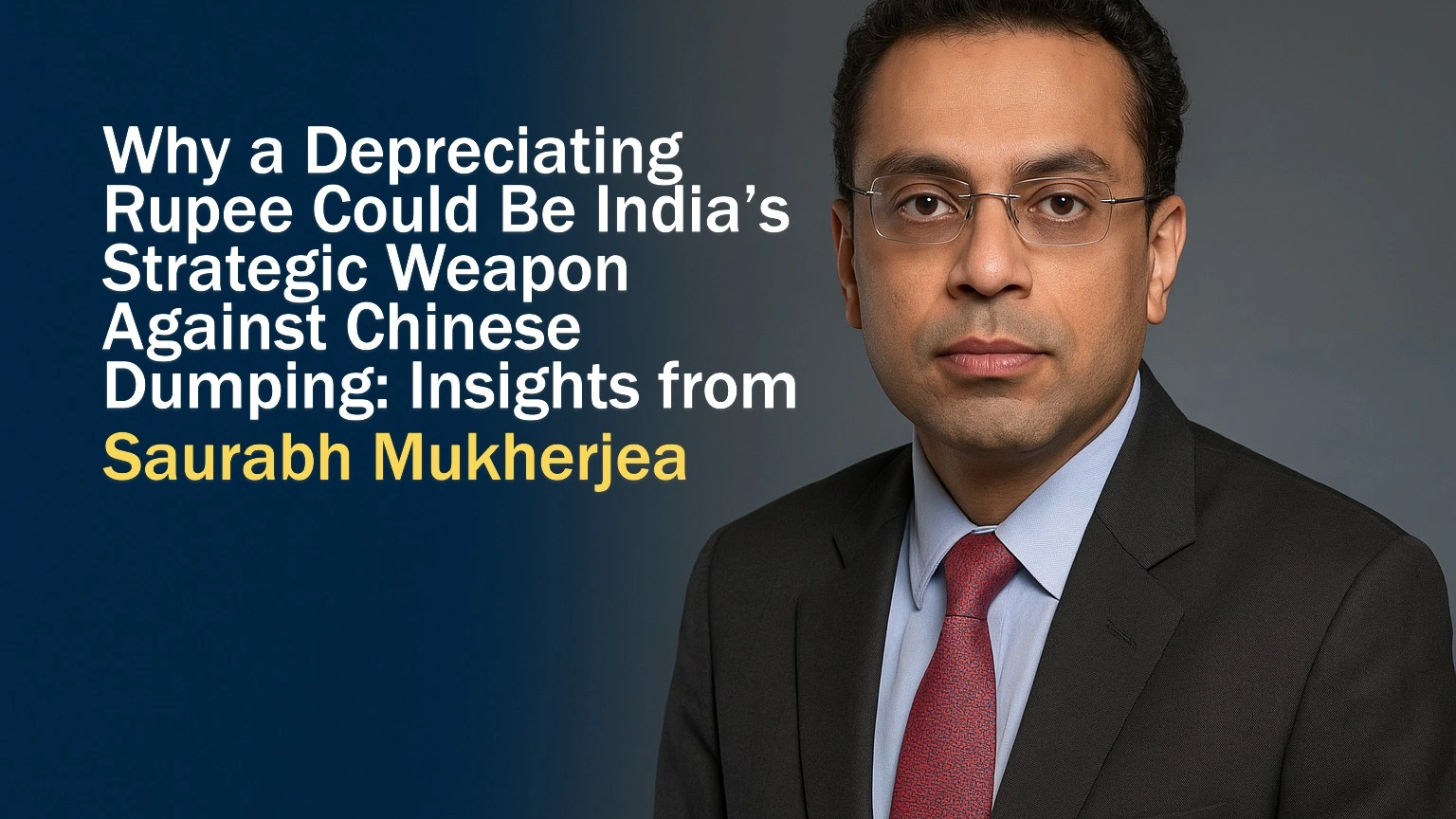Who is Saurabh Mukherjea
Saurabh Mukherjea is a founder of Marcellus Investment Managers.
In the wake of rising global economic uncertainties and the increasing threat of trade imbalances, leading financial expert Saurabh Mukherjea has shed light on a crucial macroeconomic strategy: depreciating the Indian Rupee to counter potential Chinese dumping. According to Mukherjea, this approach can act as a powerful tool in protecting Indian manufacturing and promoting fair trade practices in the years ahead.
Understanding the Dumping Threat from China
China has long been accused of dumping cheap goods into international markets — a practice where products are exported at prices lower than their production cost to gain market dominance. India, with its vast and growing consumer base, has often been a target of such practices. Dumping not only harms domestic industries but also leads to job losses and stifles the growth of local enterprises.

With the Indian government pushing forward initiatives like ‘Make in India’, PLI schemes, and Atmanirbhar Bharat, the threat of dumping becomes even more pressing. Without adequate trade protection, Chinese manufacturers can undercut local producers, leading to long-term damage to the Indian economy.
Saurabh Mukherjea’s Currency Strategy
In a recent economic discussion, Saurabh Mukherjea highlighted how letting the Rupee depreciate strategically can serve as a countermeasure against Chinese dumping. Here’s how:
- Makes Chinese Imports Expensive:
A weaker Rupee naturally makes imports more expensive. This means dumped goods from China would lose their price competitiveness in Indian markets, giving local products an edge. - Encourages Domestic Substitution:
Higher prices for Chinese imports would nudge Indian consumers and businesses to explore domestic alternatives. This shift not only supports local manufacturers but also promotes innovation and capacity building within India. - Boosts Indian Exports:
A depreciated Rupee enhances the price competitiveness of Indian exports. As Indian products become more affordable globally, it boosts foreign exchange earnings, strengthens the balance of trade, and supports employment generation. - Promotes Investment in Indian Industry:
As local products become more viable and profitable, both domestic and foreign investors are likely to show increased interest in Indian manufacturing, leading to job creation and technology transfer.
A Balanced Approach Is Key
While currency depreciation has its merits, Mukherjea cautions that it must be managed judiciously. Uncontrolled depreciation can lead to imported inflation, higher fuel costs, and adverse effects on the common citizen. Therefore, the strategy should be calibrated and gradual, accompanied by complementary fiscal and trade policies.
The Reserve Bank of India (RBI), with its cautious stance on currency management, will play a pivotal role in executing this approach. Maintaining a balance between inflation control and export competitiveness will be the central challenge.
Learning from Global Trade Playbooks
Globally, several countries have used currency depreciation as a tool for export promotion and import control. China itself maintained a weaker Yuan for decades to power its export machine. Japan, South Korea, and many Southeast Asian nations have followed similar paths at various points in their economic growth journey.
By leveraging the same tool, India can level the playing field, especially when faced with unfair trade practices like dumping.
Conclusion
Saurabh Mukherjea’s perspective brings a fresh macroeconomic insight into how India can insulate itself from aggressive Chinese trade tactics. As global geopolitics shift and countries become more protective of their domestic interests, India too must adopt multi-pronged strategies — and currency depreciation could be one of the most effective tools in its arsenal.
Policymakers and economists will need to work in tandem to ensure that this strategy is implemented responsibly, transparently, and in the national interest. With the right balance, India can not only defend its economy but also emerge stronger in the global trade arena.
Also Read
US Dollar Index (DXY) Under Pressure: How Bitcoin, Solana, and Dogecoin Are Reacting
The U.S. Economy: Going Up or Down? (2025 Update)
Rupee falls 13 paise to 85.55 against US dollar in early trade

Add a Comment